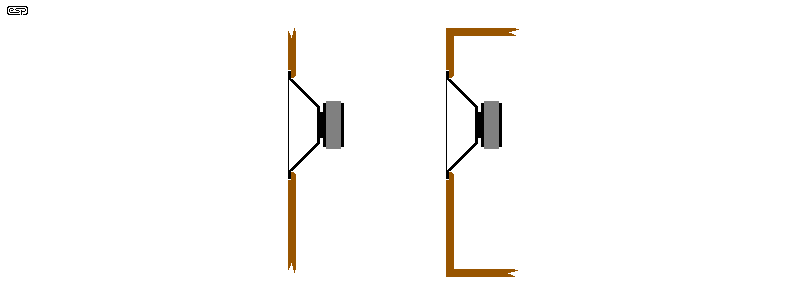

In this application, the driver’s -3 dB point is acceptable at 89.15 Hz, and the system has a Q of 0.672. The predicted frequency response of our typical 6.5-inch midrange speaker when installed in a door or rear parcel shelf. This enclosure is large enough to simulate an infinite-baffle installation. The graph below shows the driver’s predicted frequency response in an enclosure with an air volume of about 3 cubic feet.
#MID RANGE SPEAKER ENCLOSURE DESIGN DRIVER#
Yes, we have the benefit of increased physical power handling, but we trade bass output.įor this example, we’ll use a 6.5-inch midrange driver that’s been designed for infinite-baffle installations in the doors of a car or truck or on the rear parcel shelf of a sedan. This spring adds to the compliance of the speaker to form a high-pass filter. In a sealed enclosure, air acts as a spring. Modeling Speaker BehaviorĪnytime a speaker will be used at frequencies below 300 Hz, we need to ensure that there’s enough air volume behind the driver so as not to affect the overall system compliance. If the enclosure used with the speaker is too small, you’ll end up with unwanted distortion and limited low-frequency extension.
#MID RANGE SPEAKER ENCLOSURE DESIGN DRIVERS#
In this range, most drivers with a cone diameter of 4 inches or more can play down to around 125 Hz or lower.

In this context, when we talk about bass, we are discussing audio frequencies below about 300 Hz. Dash pods, kick-panel enclosures and sealed enclosures in doors might look cool, but they aren’t always an ideal solution for a speaker that will attempt to produce bass.


 0 kommentar(er)
0 kommentar(er)
